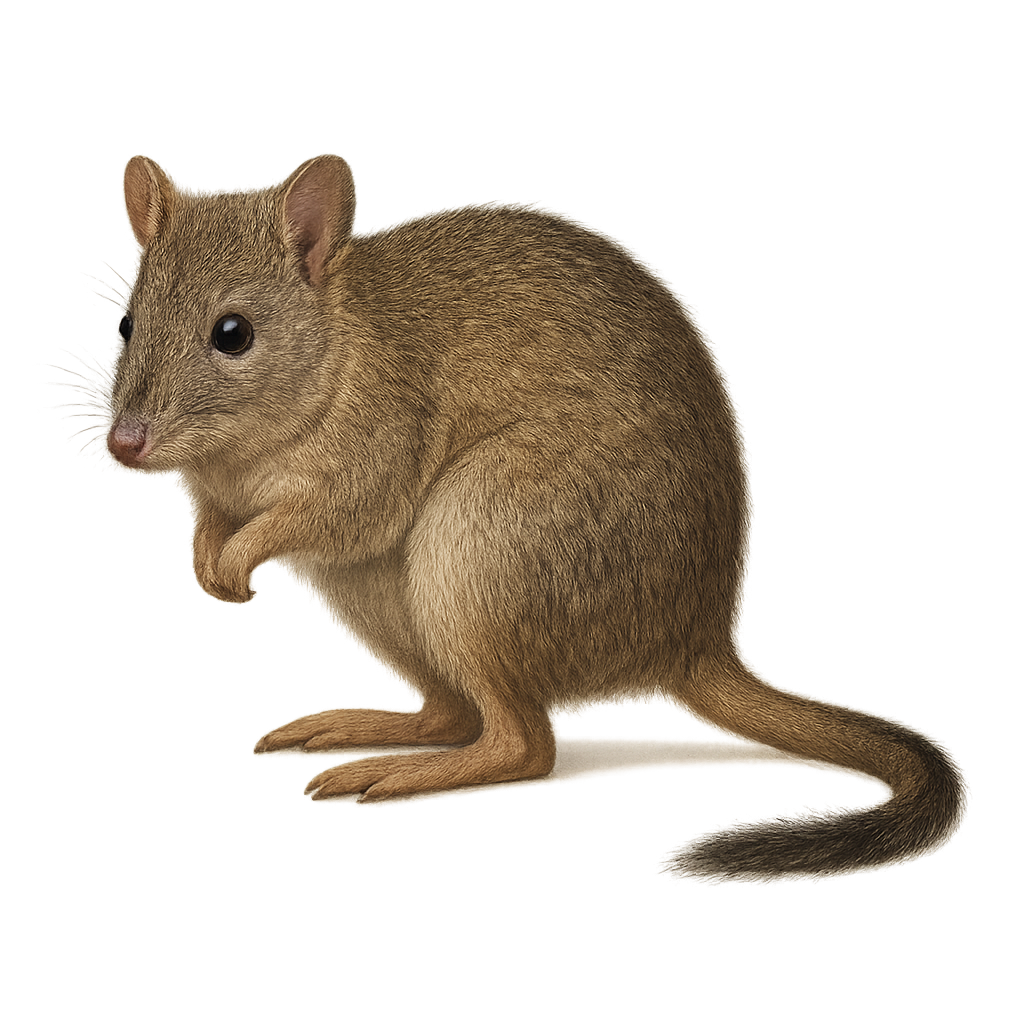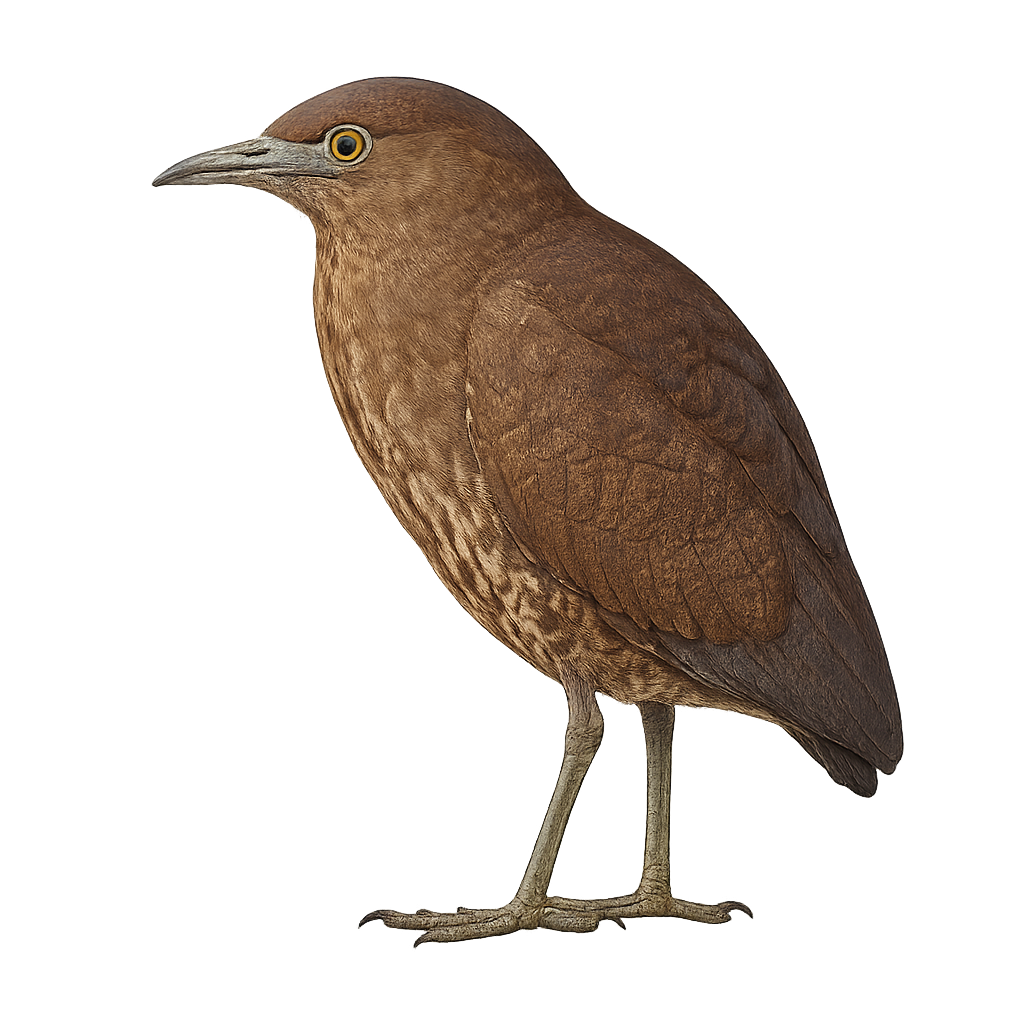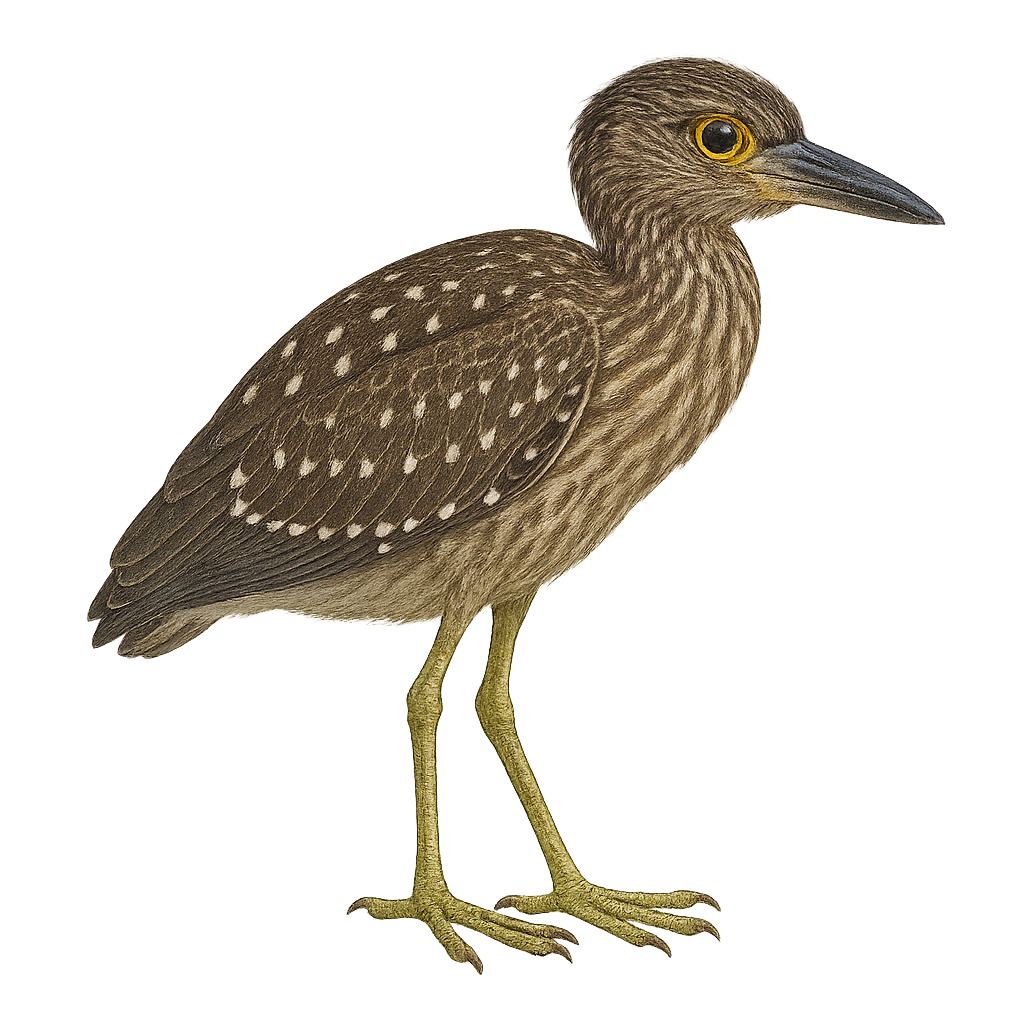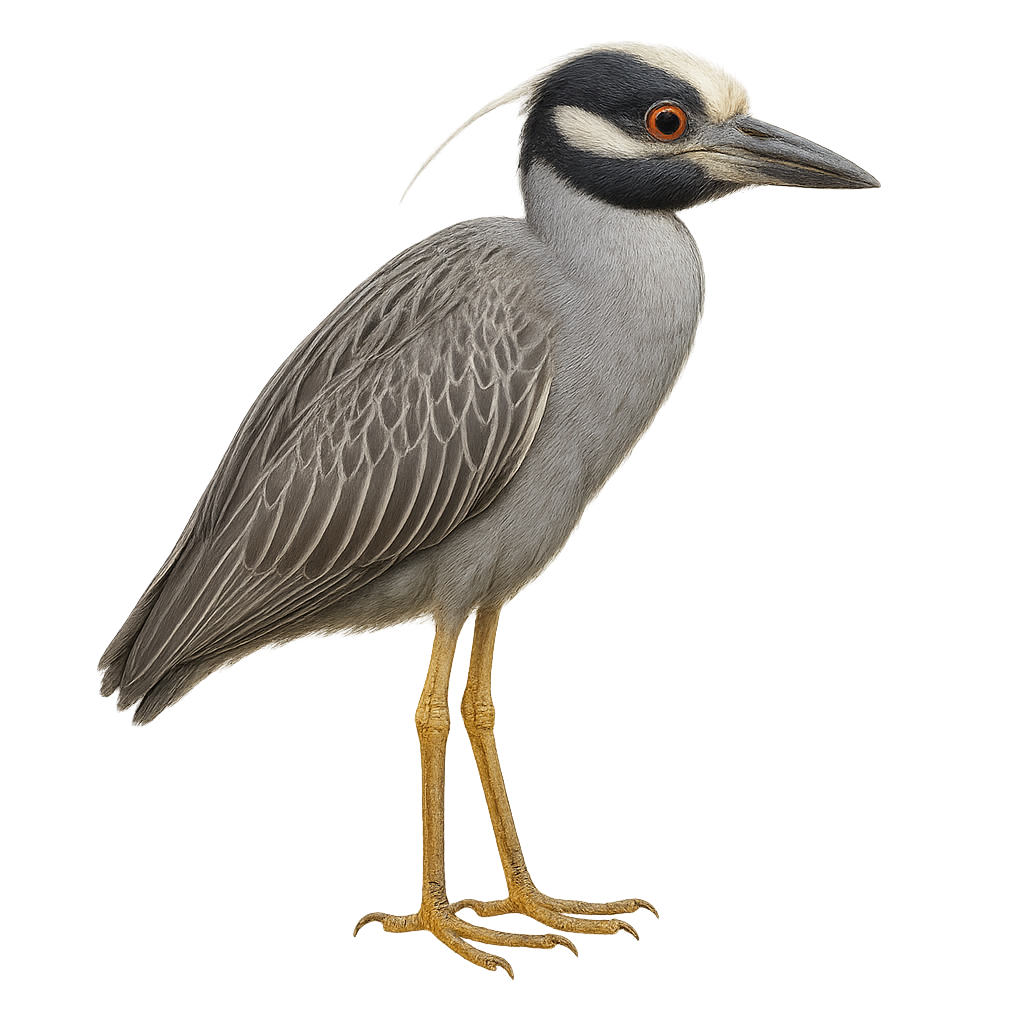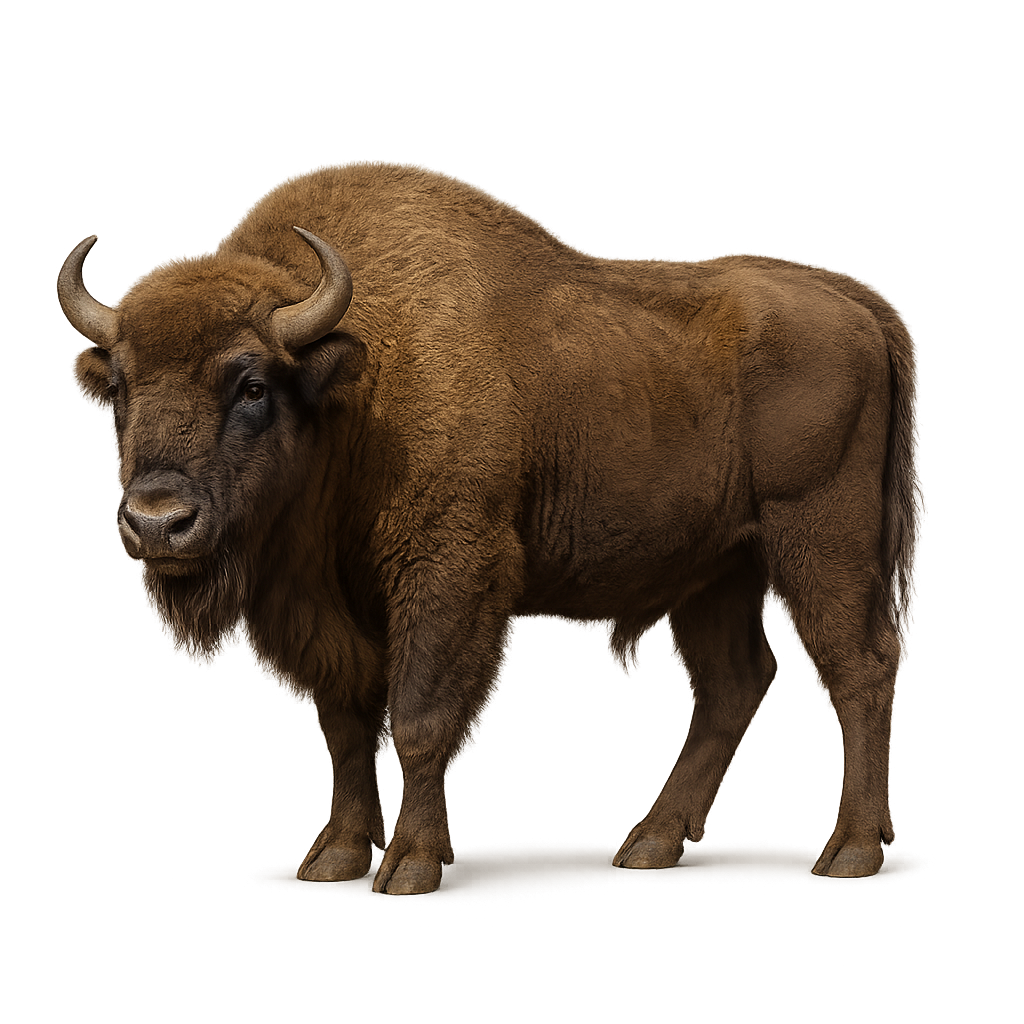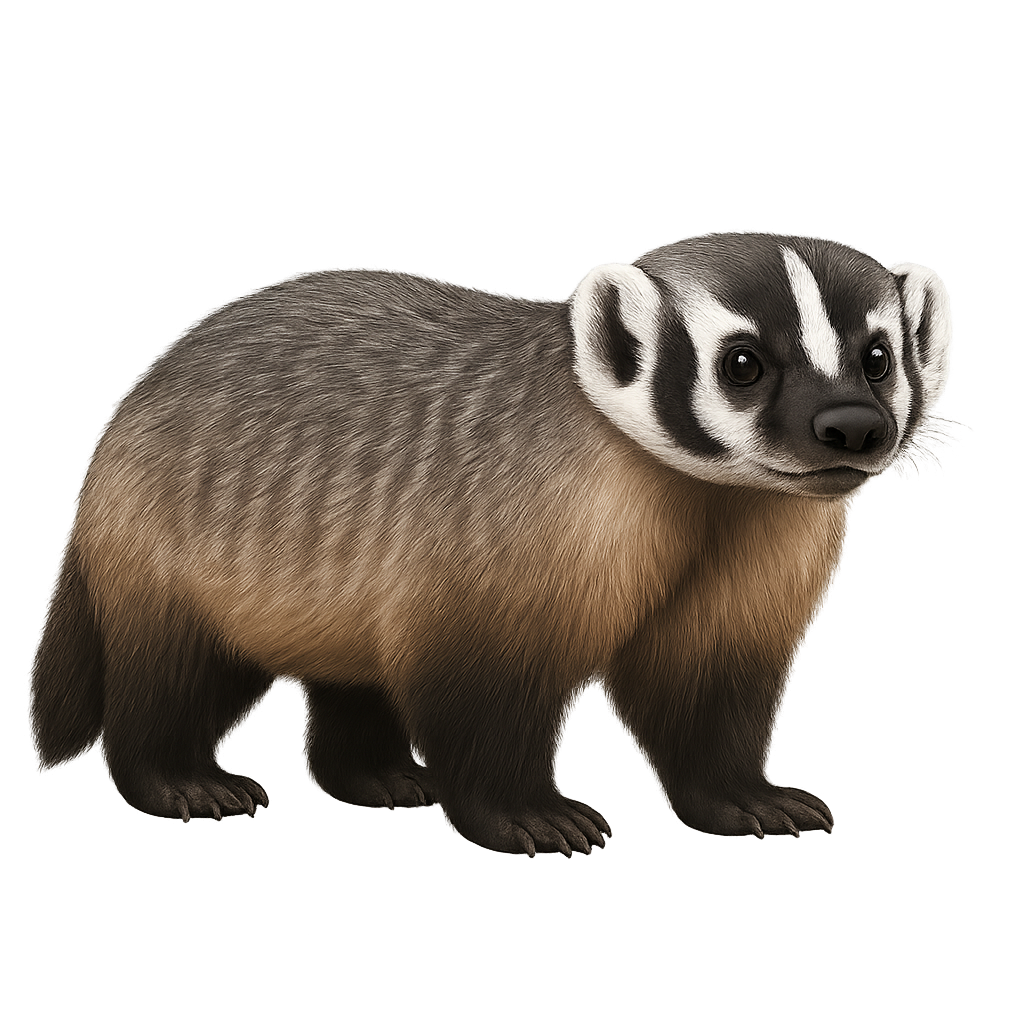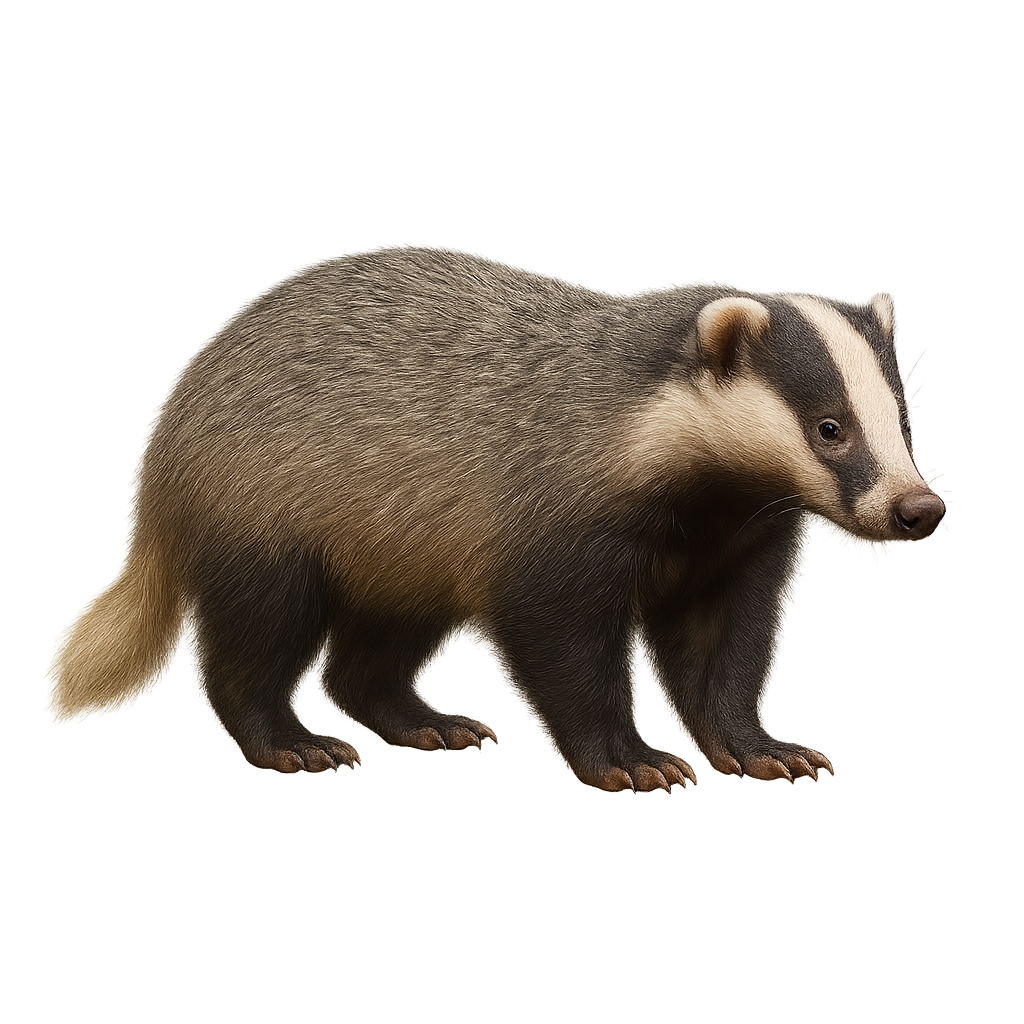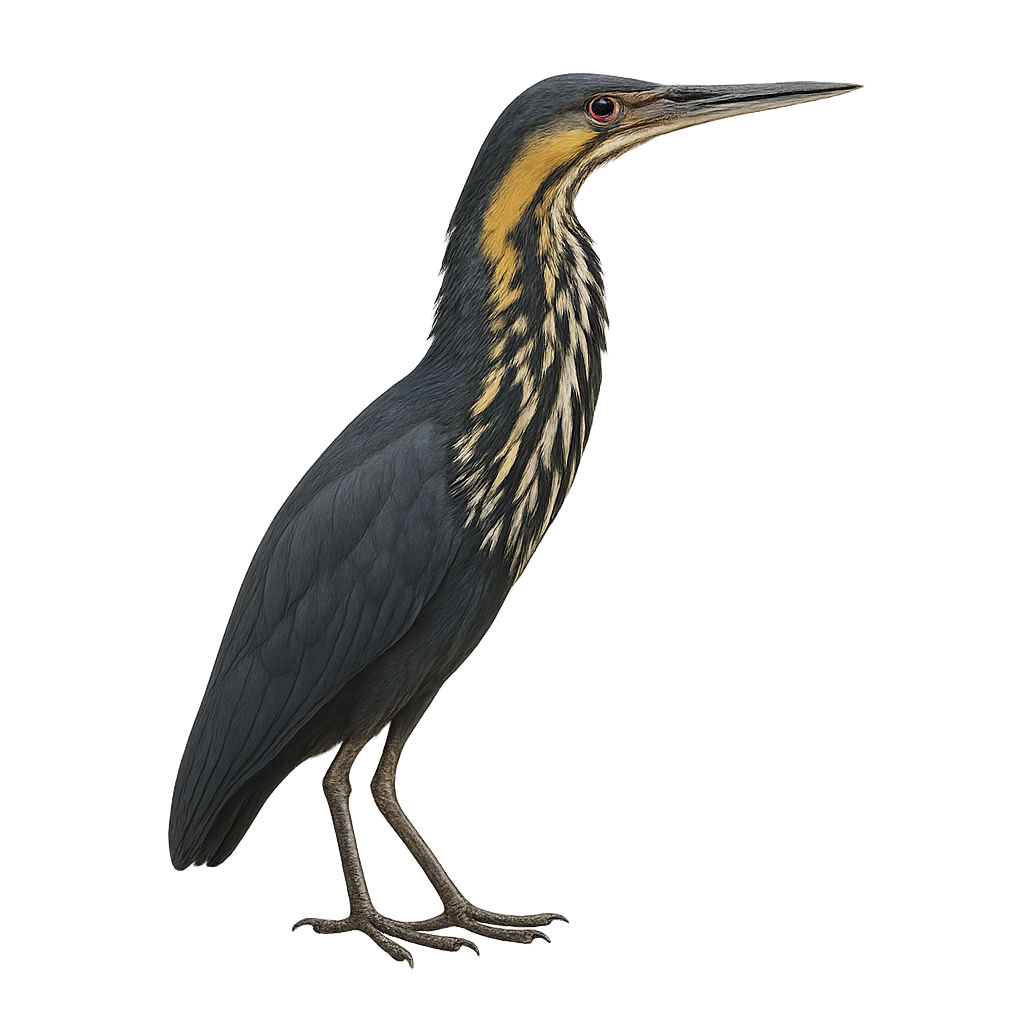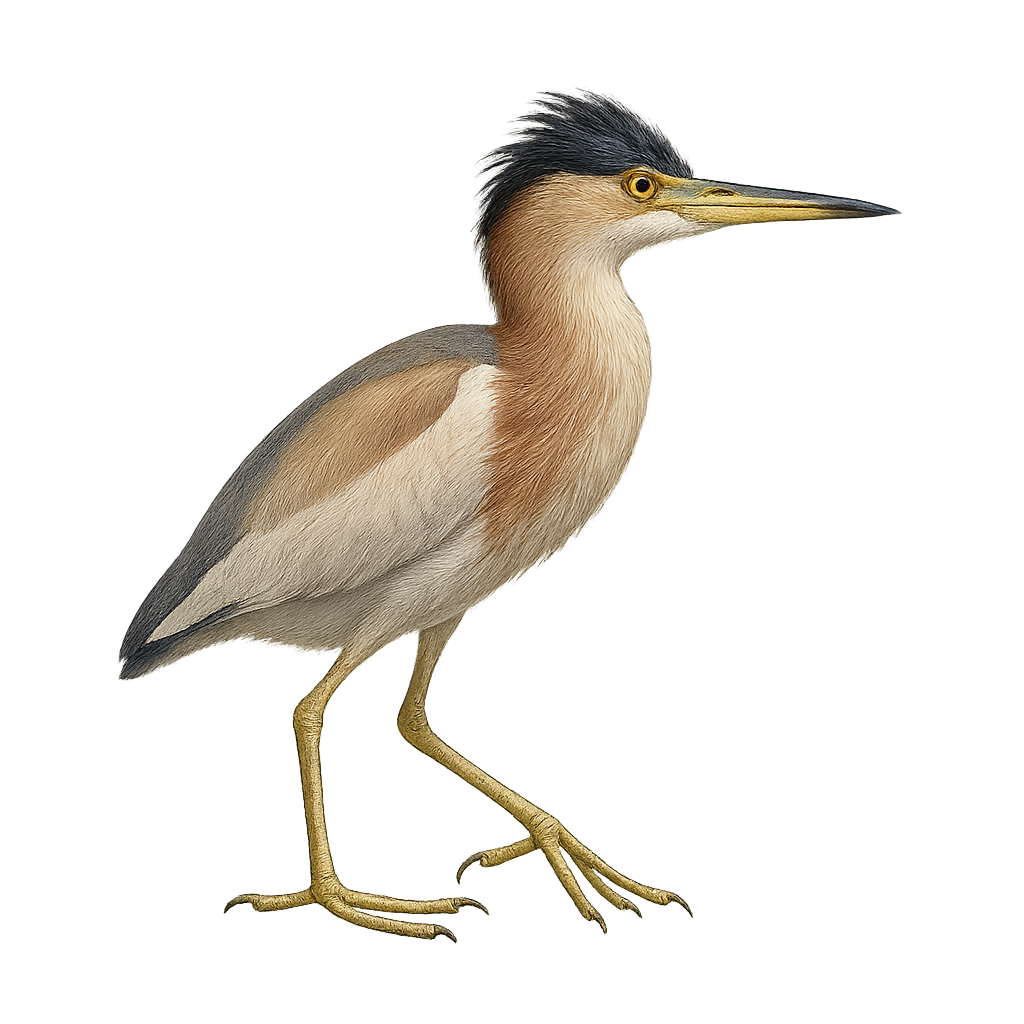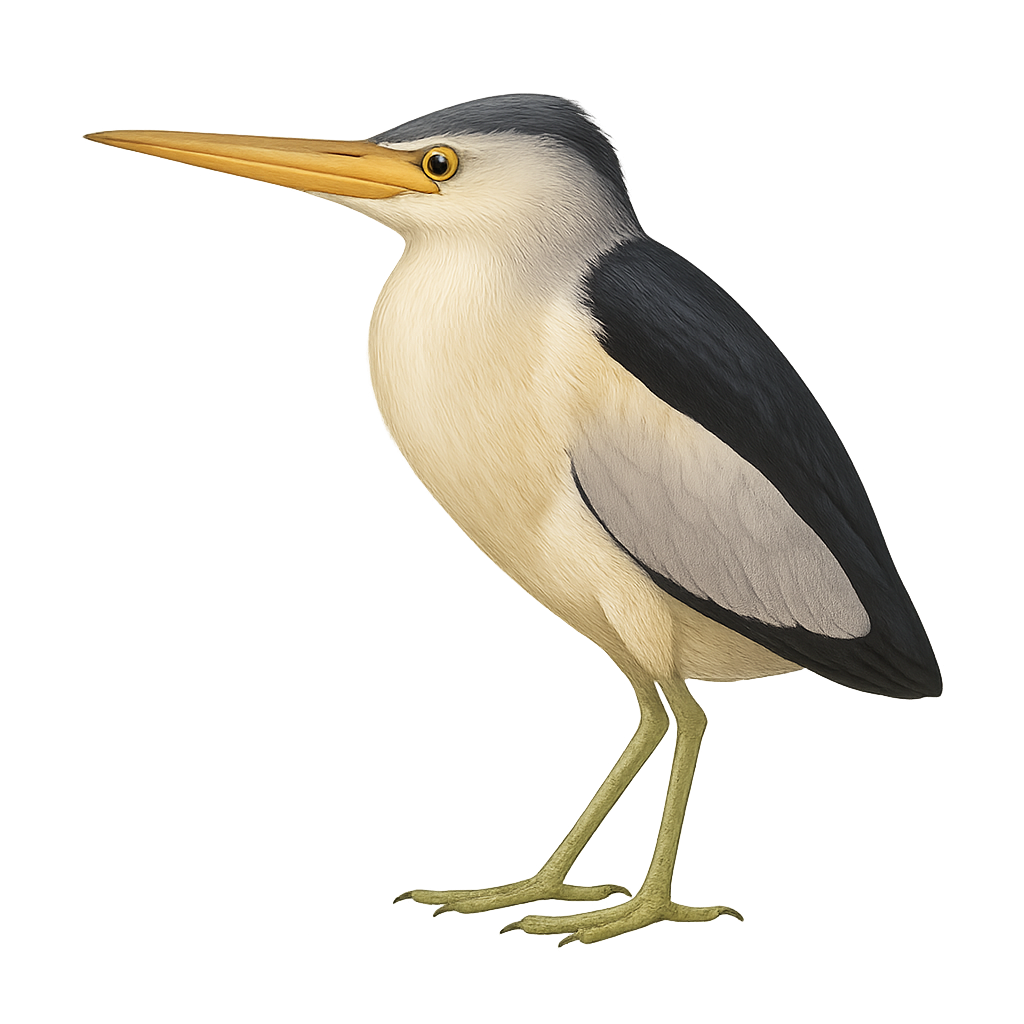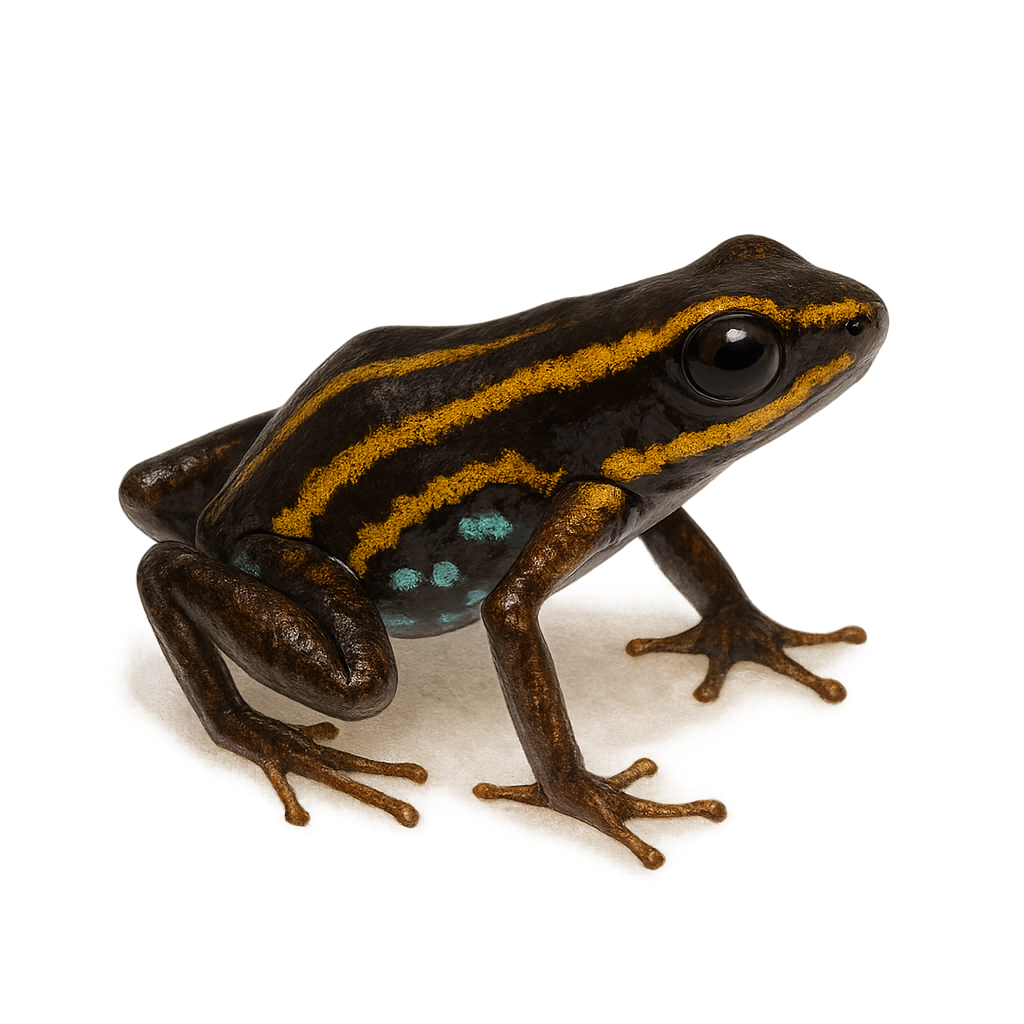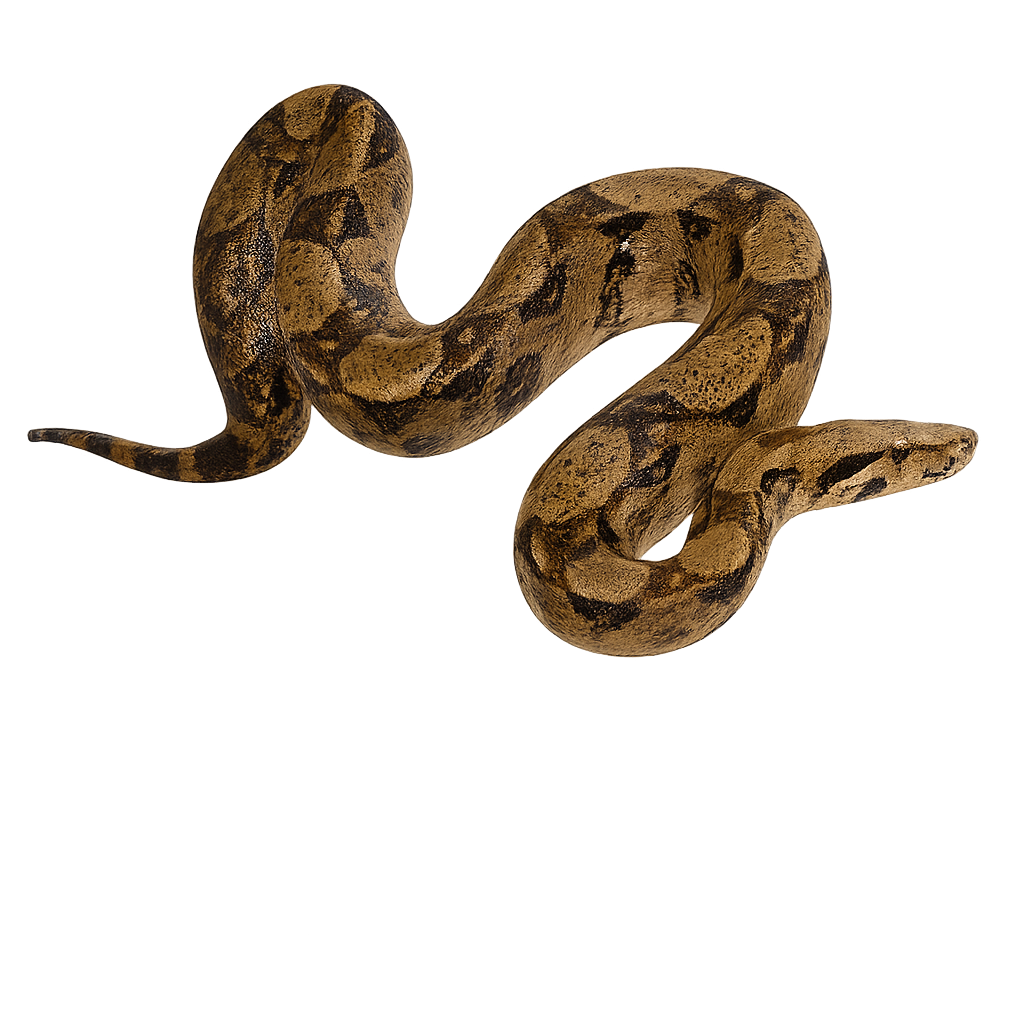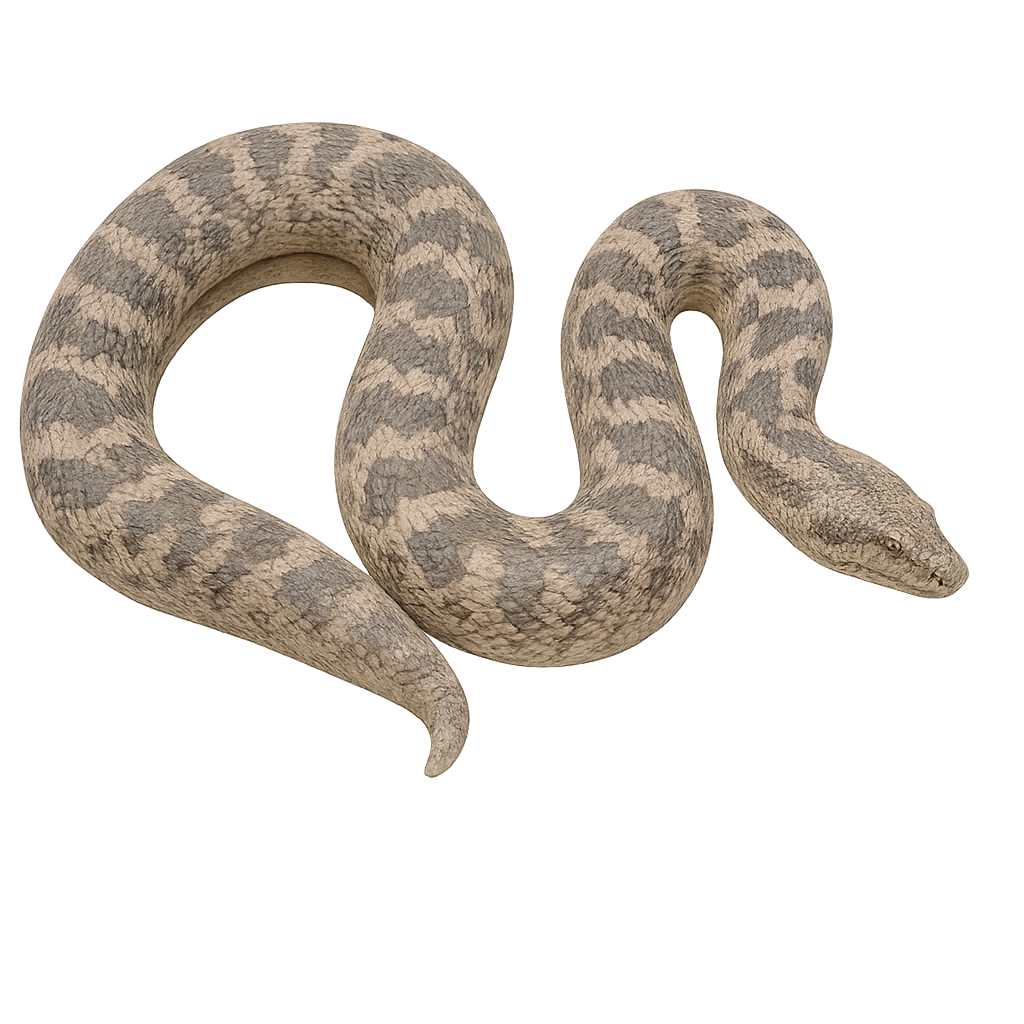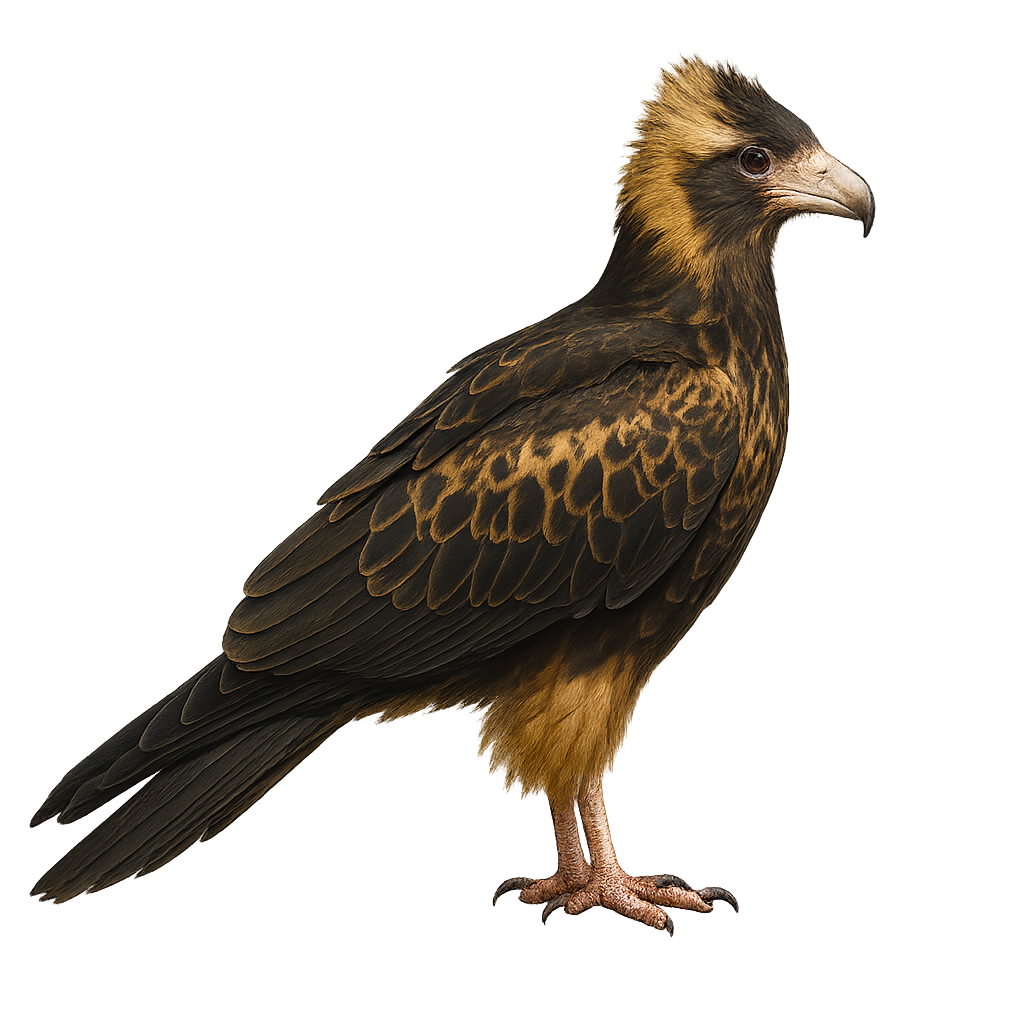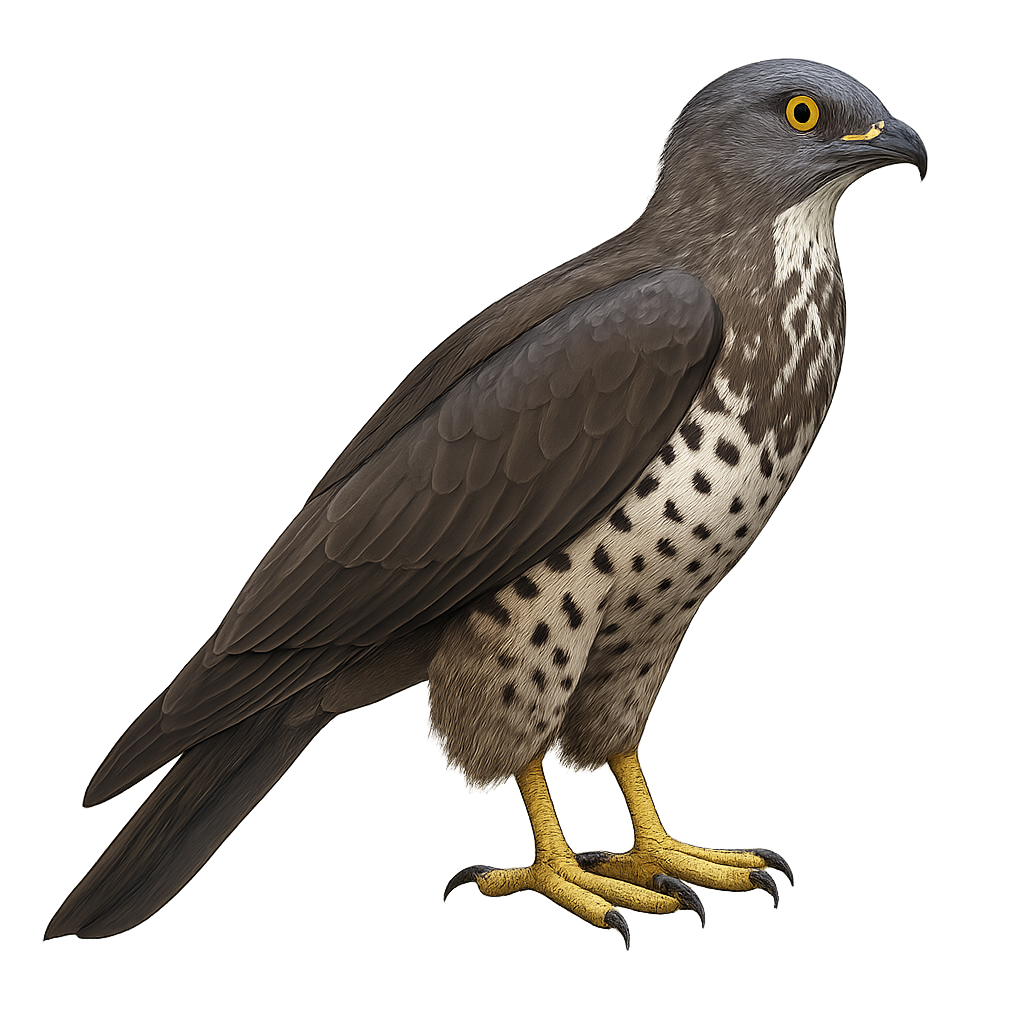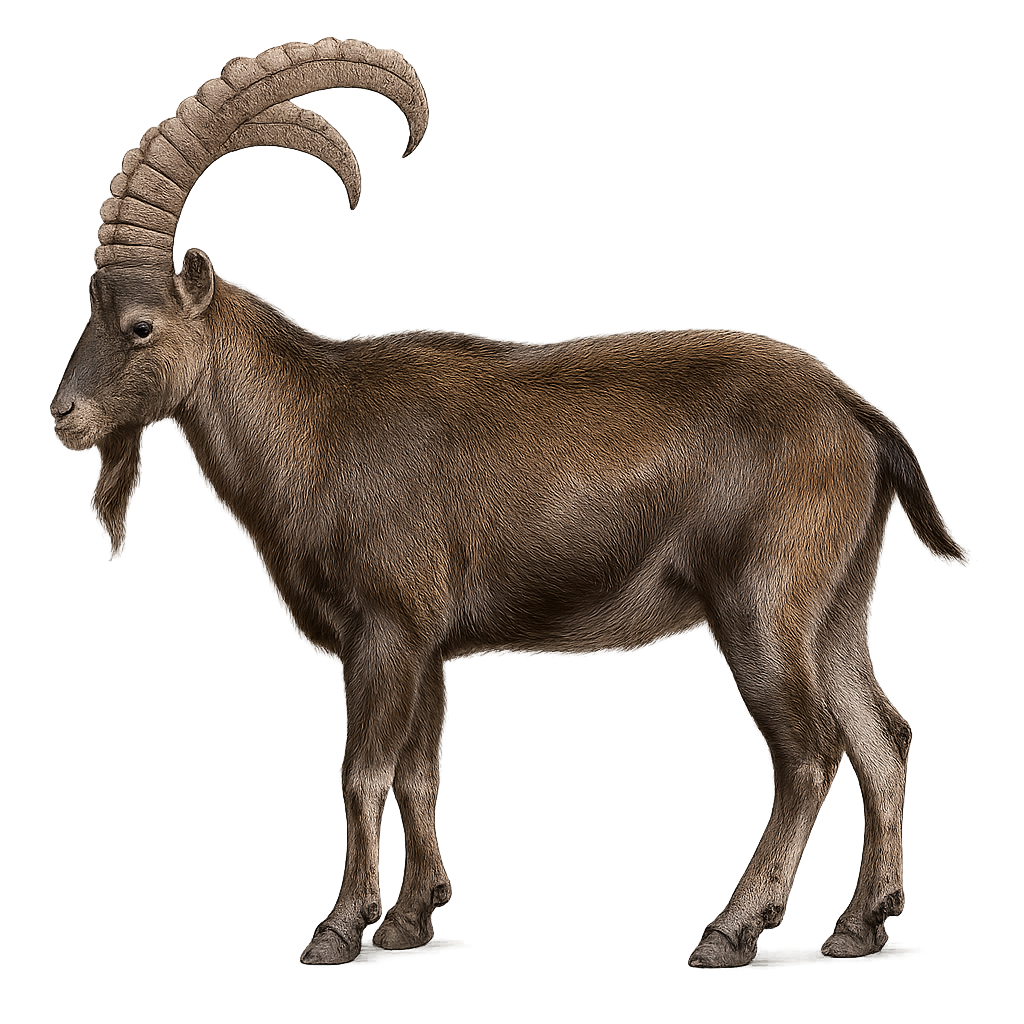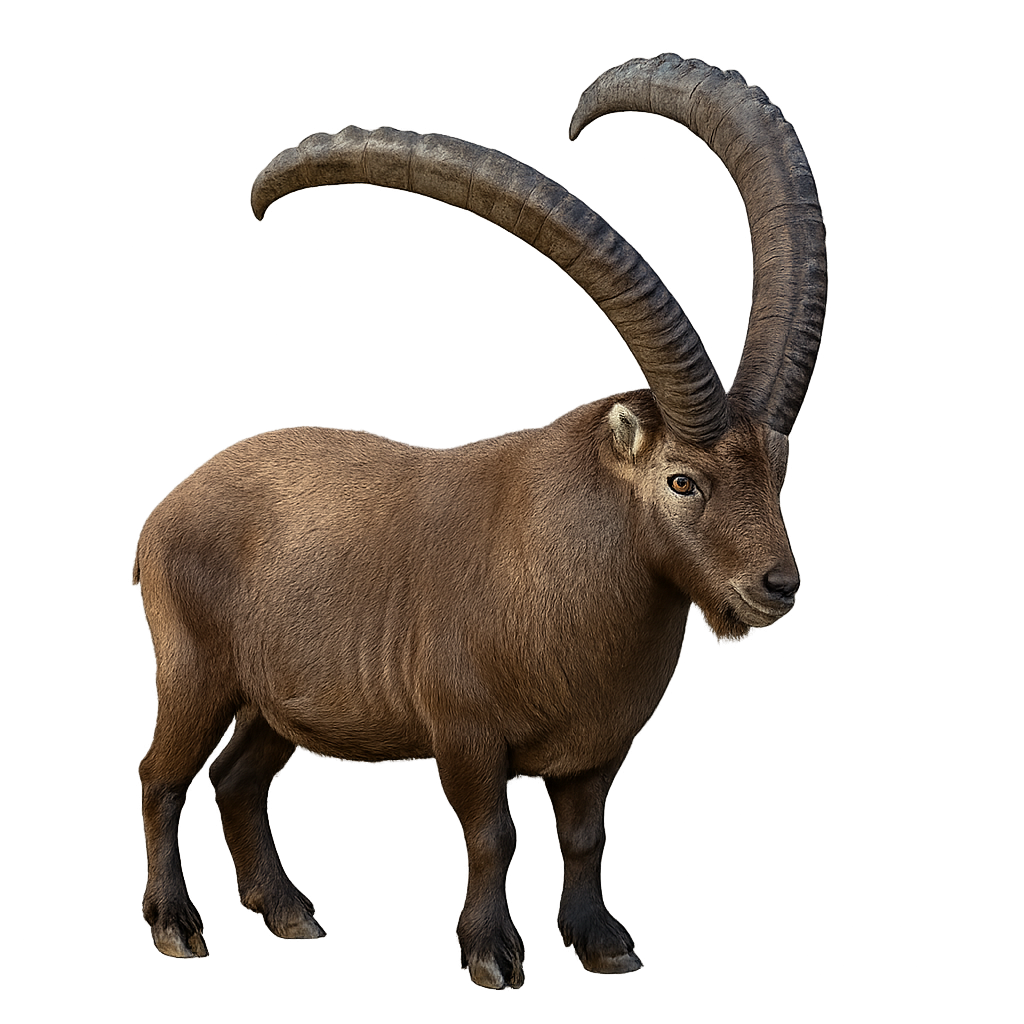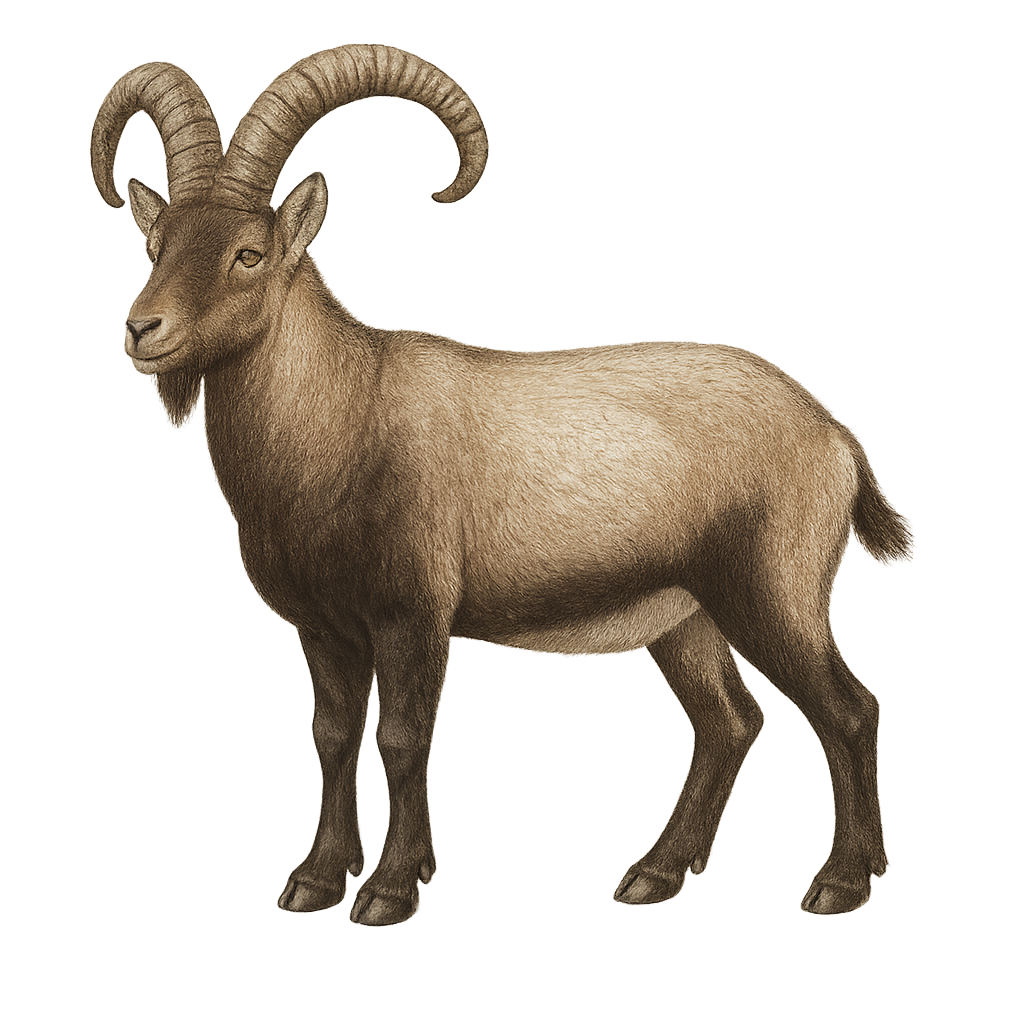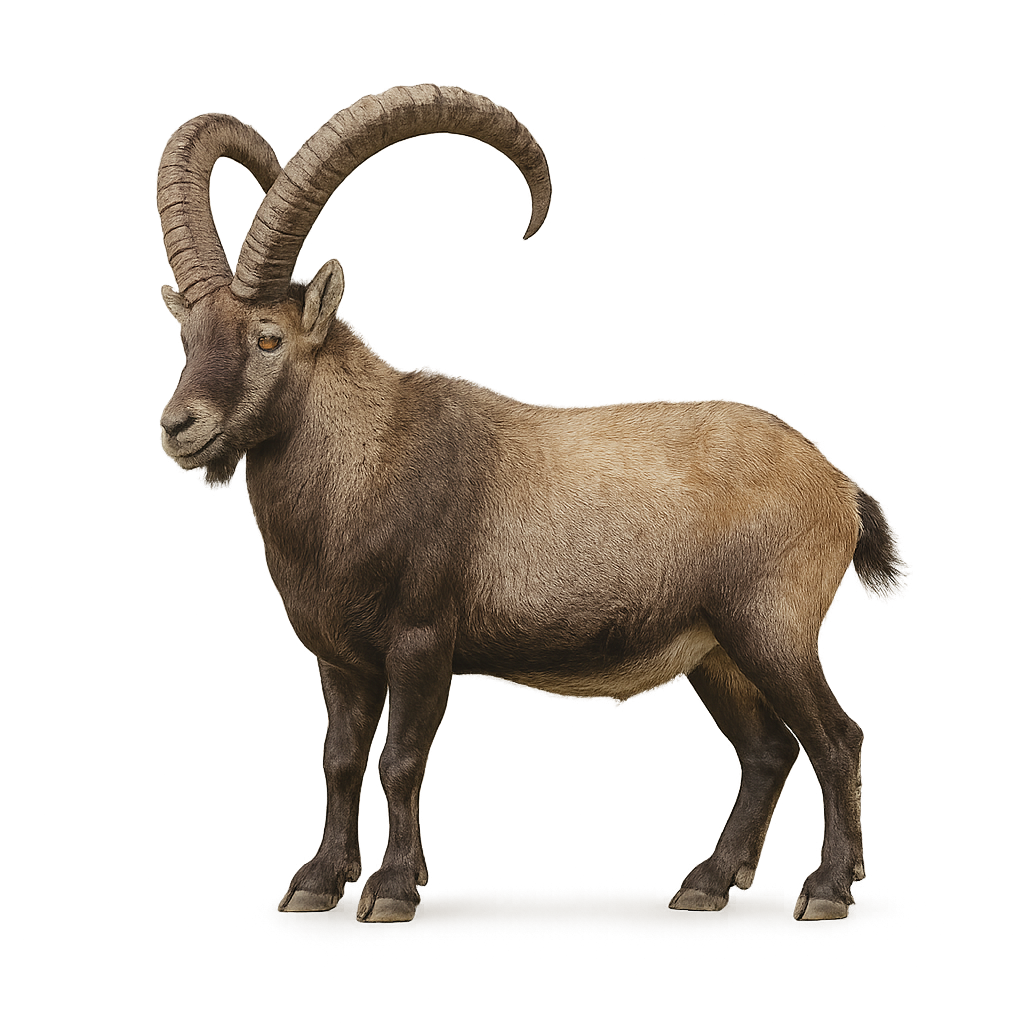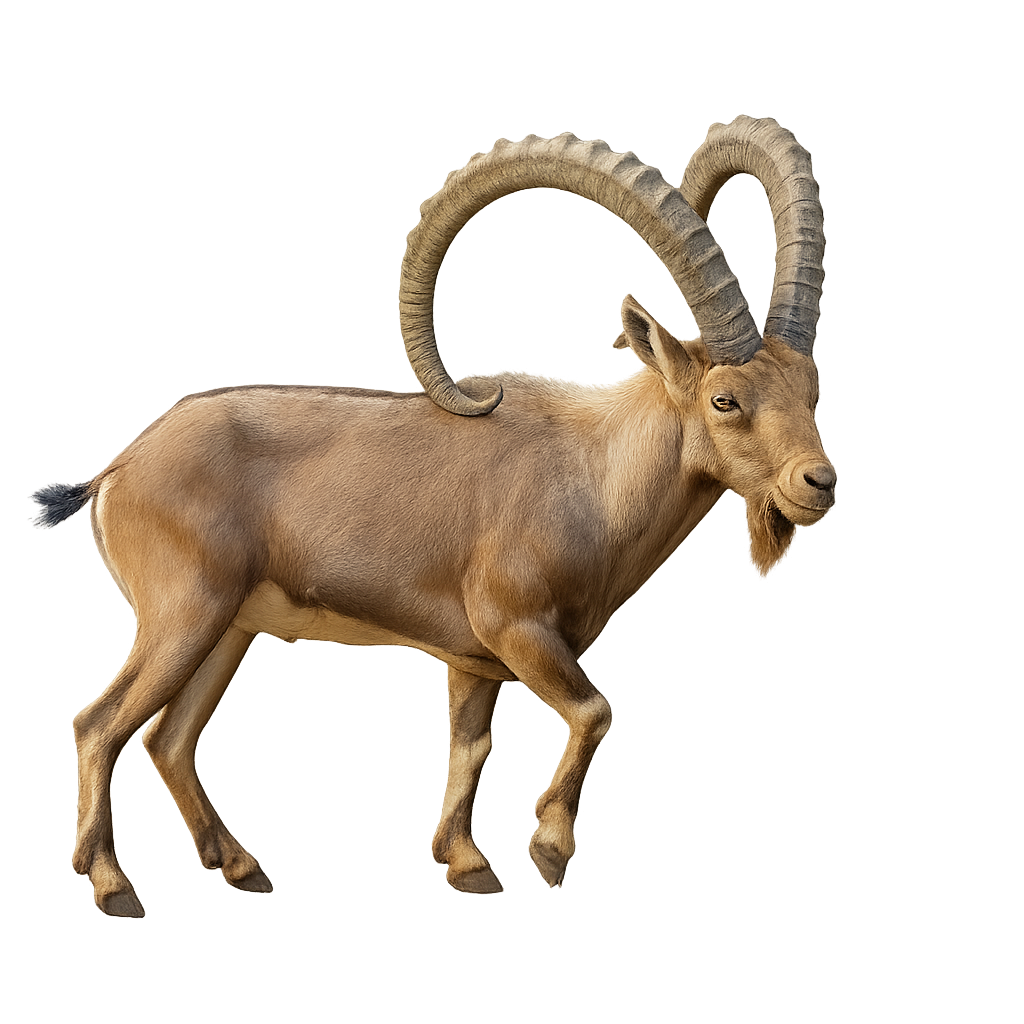The woylie, or Bettongia penicillata, is a small Australian marsupial known for its distinctive brush-tailed appearance. This nocturnal creature inhabits open forests and woodlands, playing a crucial ecological role by dispersing fungal spores. Measuring about 30 to 38 cm in length, with a tail of 29 to 36 cm, it weighs between 1.1 and 1.6 kg. Its fur is grey-brown with a lighter underside. Once widespread, its habitat has diminished due to predation by foxes and cats, as well as habitat loss. Conservation efforts are underway to protect this vulnerable species, including the establishment of reserves and captive breeding programs.
The Japanese Night Heron, or Gorsachius goisagi, is a rare and elusive bird primarily found in Japan. It is characterized by its brown plumage and streaked patterns, which help it blend into its forested environment. This bird prefers dense, humid forests where it can find its diet of small fish, insects, and amphibians. The Japanese Night Heron is a migratory bird, wintering in Southeast Asia. Its population is declining mainly due to habitat loss, and it is classified as a vulnerable species by the IUCN. Conservation efforts are crucial to ensure its long-term survival.
The Black-crowned Night Heron is a medium-sized bird, easily recognized by its silver-gray plumage and piercing yellow eyes. It primarily inhabits marshes, estuaries, and lake shores in Europe, Asia, and North Africa. This nocturnal bird is an excellent fisherman, feeding on fish, crustaceans, and invertebrates, which it captures with its strong, pointed bill. Unlike many other aquatic birds, the Black-crowned Night Heron is primarily active at dusk, searching for food in the darkness.
The Black-crowned Night Heron is a social bird, forming colonies for breeding, but it prefers a quiet and hidden environment. While not directly threatened, it faces risks from water pollution and the destruction of its natural habitats.
The White-eared Night Heron, or Gorsachius magnificus, is a rare and elusive bird primarily found in the humid forests of southern China and northern Vietnam. This medium-sized heron is distinguished by its dark plumage, wings adorned with white patterns, and a characteristic white patch behind the eye. It inhabits wooded areas near water bodies, feeding mainly on fish, aquatic insects, and small amphibians. Its behavior is predominantly nocturnal, making it difficult to observe. Due to deforestation and habitat loss, the White-eared Night Heron is classified as endangered by the IUCN.
The Yellow-crowned Night Heron, Nyctanassa violacea, is a medium-sized bird in the heron family. It is easily identified by its striking yellow crown and bluish-gray plumage. This bird is primarily found in wetlands, mangroves, and coastal marshes from the southern United States to northern South America. It feeds mainly on crustaceans, particularly crabs, which it skillfully hunts with its strong bill. The Yellow-crowned Night Heron is a crepuscular and nocturnal bird, often seen alone or in small groups. Although relatively tolerant of human presence, it prefers quiet habitats for breeding.
The binturong is an arboreal mammal with a stocky body and long prehensile tail. Its shaggy black fur and unique scent reminiscent of popcorn make it easily identifiable. Active at night, it moves slowly through the canopy of Southeast Asian rainforests in search of fruits, small animals, and eggs. Solitary and elusive, it is increasingly rare due to habitat loss.
The American Bison is one of the largest land mammals in North America, recognizable by its massive head, thick fur, particularly on its back. Once widespread, it nearly went extinct in the 19th century due to overhunting and habitat loss. Today, thanks to conservation efforts, the population of American Bison is growing, though the species remains protected in many areas.
The American Bison lives in herds, primarily in grasslands and plains. Herbivorous, it feeds on grasses, woody plants, and some vegetation. As it moves, it creates powerful tracks in the plains. This social mammal is also known for its territorial behavior, with males fighting for dominance within the group.
The European Bison is the largest land mammal in Europe, characterized by its imposing size, thick fur, and arched back. Once widespread across the forests of Europe, it nearly went extinct in the early 20th century, but thanks to conservation programs, wild populations have been reintroduced in several European regions. The European Bison primarily inhabits forests and wooded meadows, where it feeds on grasses, leaves, twigs, and young tree shoots.
This bison is a social animal, living in small groups or large herds, with males fighting for dominance. While its population is growing, the European Bison remains a vulnerable species due to habitat loss and fragmentation of its territory. The protection and management of its habitats remain essential for its survival.
The Asian badger, or Meles leucurus, is a medium-sized mammal belonging to the Mustelidae family. It is distinguished by its thick fur and characteristic coloration, with a white stripe on the throat and belly. This badger is primarily nocturnal and inhabits forests, grasslands, and steppes of Central and East Asia. It digs complex burrows where it spends the day and raises its young. Omnivorous, it feeds on small animals, insects, fruits, and roots. Although generally solitary, it can sometimes be seen in small family groups. Its adaptability to various habitats and suspicious behavior make it difficult to observe in the wild.
The American Badger is a medium-sized carnivore, easily recognizable by the distinctive white stripes on its head and its sturdy, stocky body. It primarily inhabits prairies and semi-arid areas in North America, where it digs complex burrows for shelter and raising its young. The American Badger is mainly insectivorous, feeding on worms, insects, and occasionally small mammals and reptiles. Its powerful claws allow it to dig quickly and efficiently into the ground.
The American Badger is a solitary animal, often active at dusk and during the night. While not immediately endangered, it can be affected by habitat loss and illegal hunting in some regions.
The European Badger is a medium-sized carnivorous mammal, easily recognizable by its gray fur, white stripes on its head, and stocky build. It primarily inhabits forests and hedgerows in Europe, where it digs complex burrows called "setts" for shelter and raising its young. The European Badger is omnivorous, feeding mainly on worms, insects, fruits, roots, and small mammals. Its nocturnal habits and solitary nature make it a difficult animal to observe.
It is an excellent digger and uses its powerful claws to modify its environment in search of food or to expand its burrow. While its population is generally stable, the European Badger faces threats such as habitat loss and road accidents. Protecting its habitats and managing its territories are crucial for the species' conservation.
The Japanese badger, Meles anakuma, is a medium-sized mammal known for its thick fur and distinctive facial stripes. It primarily inhabits forests and mountainous areas in Japan. This badger is nocturnal, spending the day in burrows it digs itself. It feeds on a variety of foods, including insects, small mammals, and fruits. Although generally solitary, it can sometimes be seen in small family groups. Its ability to adapt to different habitats and its discreet behavior make it difficult to observe in the wild.
The Black Bittern, or Botaurus flavicollis, is a medium-sized bird belonging to the Ardeidae family. It is primarily recognized for its dark plumage and distinctive yellow neck. This bird is often found in marshes and wetlands of South and Southeast Asia. It feeds mainly on fish, insects, and small amphibians. The Black Bittern is a discreet bird, often difficult to spot due to its stealthy behavior and plumage that blends into the surrounding reeds. It is most active at dusk and dawn, making it even harder to observe. Its population is stable, although habitat degradation could pose a potential threat.
The Yellow Bittern, or Botaurus sinensis, is a small heron known for its modest size and delicate plumage. Measuring about 38 to 40 cm in length, it features light brown plumage with darker shades on its back and wings. Its slender, pointed beak is perfect for catching small fish and aquatic insects. It is primarily found in the wetlands of Asia, especially in marshes, rice fields, and lake edges. This bittern is known for its discretion and ability to blend into the vegetation, making it difficult to spot. It is often active at dusk and dawn, when it primarily feeds.
The Little Bittern is a small and discreet heron, particularly hard to observe due to its brown and beige plumage, which allows it to blend perfectly into the vegetation of marshes, ponds, and rice fields. This heron is about 30 cm long and is known for its furtive behavior and quick, low flight. It primarily feeds on small fish, aquatic insects, and amphibians, hunting silently as it sneaks through the grasses or hides in reed beds.
This small heron is mainly active at dusk and during the night, making it even more discreet. While not directly threatened, the Little Bittern faces habitat loss due to the destruction of wetlands and the draining of marshes. The conservation of these habitats is crucial for the preservation of the species.
The Blue‑bellied poison frog, or Andinobates minutus, is a small, brightly colored frog native to the tropical rainforests of Colombia and Panama. Known for its vivid, toxic skin, it serves as a defense mechanism against predators. Typically measuring between 12 and 17 mm, this species displays hues ranging from blue to red, often with distinctive black patterns. It primarily inhabits leaf litter and feeds on small insects and arthropods. The Minute Poison Frog is diurnal, being active mainly during the day. Although its population is stable, it faces threats from deforestation and habitat loss.
The Boa constrictor, also known as the Emperor Boa, is a medium to large-sized snake, easily recognized by its smooth scales and complex pattern of brown and golden spots and bands. It primarily inhabits the tropical forests of Central and South America, where it hides in foliage or tree trunks, using its climbing skills to hunt and conceal itself. This non-venomous snake is a constrictor, meaning it kills its prey by wrapping around it tightly before swallowing it whole.
The Boa constrictor is generally a solitary animal, and while it is an effective predator, it primarily feeds on small mammals, birds, and occasionally reptiles. It is also popular in captivity, but like many reptiles, it is threatened by deforestation and habitat loss.
The Javelin sand boa, Eryx jaculus, is a non-venomous snake from the Boidae family, primarily found in the arid and semi-arid regions of North Africa, the Middle East, and Central Asia. This small snake, usually measuring between 40 and 80 cm, is known for its stout body and slightly flattened head. Its coloration ranges from brown to beige, often with spotted patterns that allow it to effectively camouflage in its sandy environment. Eryx jaculus is an opportunistic predator, feeding mainly on small rodents, birds, and lizards. It is primarily nocturnal, spending the day buried in the sand to protect itself from the heat.
The Musk Ox is a large herbivorous mammal, easily recognized by its thick brown fur that protects it from the freezing temperatures of the Arctic. This robust animal, with curved horns and a massive build, primarily inhabits the cold regions of Canada, Greenland, Alaska, and Norway. The Musk Ox feeds on woody plants, lichens, and mosses, which it finds in Arctic and sub-Arctic zones. It forms social groups to protect itself from predators and extreme weather conditions.
Adapted to harsh environments, the Musk Ox is an extremely resilient animal, capable of surviving extremely low temperatures due to its dense coat. However, it remains vulnerable to climate change, habitat loss, and human disturbances, which threaten its population.
The Black-breasted Buzzard, or Hamirostra melanosternon, is an impressive raptor native to Australia, known for its distinctive black breast and ability to crack emu eggs with stones. This bird measures about 50 to 60 cm in length with a wingspan of 1.5 meters. It primarily inhabits arid and semi-arid regions, favoring open woodlands and savannas. Its plumage is mostly dark brown with black markings on the breast and broad wings. The Black-breasted Buzzard is an opportunistic hunter, feeding on small mammals, birds, and reptiles. It is also known for its unique behavior of using stones to crack open other birds' eggs.
The Honey Buzzard is a medium-sized diurnal raptor, easily recognizable by its plumage marked with light and dark brown patterns and its slender build. It primarily inhabits open forests, hedgerows, and wooded areas in Europe and Asia, and feeds mainly on larvae of bees, wasps, and small insects, which it captures by flying above beehives or attacking the nests of social insects.
This raptor uses its powerful talons and curved beak to extract larvae from the nests. The Honey Buzzard is also known for its ability to undertake long migratory flights, leaving its breeding grounds in Europe to travel to warmer regions in North Africa for the winter. While the population remains stable in many areas, the Honey Buzzard may be threatened by habitat loss and the reduction in insect populations on which it relies.
Bongo
Cephalophus eurycerus
The Bongo is a large forest antelope native to Central Africa, recognized for its beautiful white stripes and bright orange coat. It primarily lives in dense forests, where it feeds on leaves, fruits, and bark. This antelope is usually solitary or lives in small family groups. Due to habitat loss and hunting, the Bongo is classified as a vulnerable species. Its discretion and ability to blend into its environment make it a difficult animal to spot.
The bonobo, or Pan paniscus, is a great ape native to Africa, closely related to the common chimpanzee. It is distinguished by its more slender build, black face, and pink lips. Bonobos live in complex social groups and are known for their peaceful behavior and conflict resolution through social and sexual interactions. They primarily inhabit the tropical rainforests of the Democratic Republic of the Congo. Their diet is mainly frugivorous, but they also consume leaves, flowers, and occasionally insects. Bonobos are threatened by deforestation and hunting, leading to a decline in their population.
The Walia ibex, or Capra walie, is a species of ibex endemic to the Ethiopian highlands, particularly in the Simien Mountains National Park. It is distinguished by its impressive, curved horns, which can reach up to 110 cm in males. The coat is dark brown with lighter markings on the belly and legs. Males are generally larger and heavier than females, weighing up to 125 kg. This species is well adapted to steep, rocky terrains, where it primarily feeds on grasses and shrubs. Unfortunately, the Walia ibex is critically endangered due to hunting and habitat loss.
The Siberian Ibex, also known as the Asiatic Ibex, is a majestic wild goat species that lives in the rocky mountains of Central Asia, particularly in Russia, Kazakhstan, China, and Mongolia. This imposing animal, with long, curved horns and a dense coat that protects it from harsh winters, typically inhabits the steep slopes of high-altitude mountains.
Herbivorous, the Siberian Ibex primarily feeds on alpine vegetation, grasses, and woody plants. It is particularly agile, capable of moving across rugged terrain and leaping between rocks with ease. While it was once heavily hunted for its valuable horns and meat, conservation efforts have helped stabilize its population, although the Siberian Ibex remains vulnerable due to habitat loss and poaching.
The Alpine Ibex is a large herbivorous mammal, easily recognized by its long, curved horns and light brown or grayish coat. It primarily inhabits the rugged mountains of the Alps, southern Europe, and some mountainous regions of the Middle East. The Alpine Ibex feeds on alpine vegetation, grasses, and woody plants, and it is particularly adapted to life at high altitudes due to its great agility on rocky terrain and its thick coat.
This animal is social and lives in family groups, although adult males, called "ibex", form separate groups. After nearly disappearing in the early 20th century due to overhunting, conservation programs have helped stabilize its population. However, it remains vulnerable to habitat loss and human disturbances.
The Pyrenean Ibex, or Capra pyrenaica pyrenaica, was a subspecies of the Iberian ibex once found in the Pyrenees mountains. This robust caprine was adapted to rugged terrains and harsh climates. It had impressive, curved horns, characteristic of males, while females had smaller horns. Its coat varied from brown to gray, providing effective camouflage in its rocky habitat. Unfortunately, this subspecies became extinct in 2000, due to excessive hunting and habitat degradation. Cloning efforts were made to bring it back to life, but without lasting success. Its extinction highlights the importance of species conservation and the protection of natural habitats.
The Iberian Ibex is a large herbivore native to the mountains of the Iberian Peninsula, primarily in the mountain ranges of the Pyrenees and the Sierra de Gredos in Spain. It is easily recognizable by its massive, backward-curved horns and brown and gray coat. This ibex lives in rocky, steep terrain, where it feeds mainly on grasses, woody plants, and alpine vegetation.
The Iberian Ibex is a social animal that forms family groups consisting of females and young, while adult males, called "ibex," form separate groups. The species nearly went extinct in the 20th century due to overhunting, but thanks to conservation efforts, its population has been restored in several regions of Spain. However, the Iberian Ibex remains vulnerable to habitat loss and human disturbances.
The Nubian ibex, scientifically known as Capra nubiana, is a species of wild goat that inhabits the mountainous regions of the Middle East and North Africa. Adapted to arid and rocky environments, this caprid finds refuge and sustenance in these challenging terrains. Males are notable for their long, curved horns, while females have shorter, thinner ones. Their coat is typically light brown, providing camouflage against the rocky backdrop. Nubian ibexes are agile climbers, adept at navigating steep and rugged landscapes. They live in groups, often consisting of females and young, while adult males tend to be more solitary. Their diet mainly includes dry vegetation, grasses, and leaves.
The Azores Bullfinch, or Pyrrhula murina, is an endemic bird of the Azores, specifically found on the island of São Miguel. This medium-sized bird, measuring about 17 cm in length, is characterized by its grey and black plumage, with white accents on the wings. The male and female show little sexual dimorphism, although the male often has slightly brighter colors. The Azores Bullfinch is primarily granivorous, feeding on seeds, buds, and fruits. It inhabits the humid forests and wooded areas of the island, playing an important role in seed dispersal. Unfortunately, this species is critically endangered due to habitat loss and predation by introduced species.


